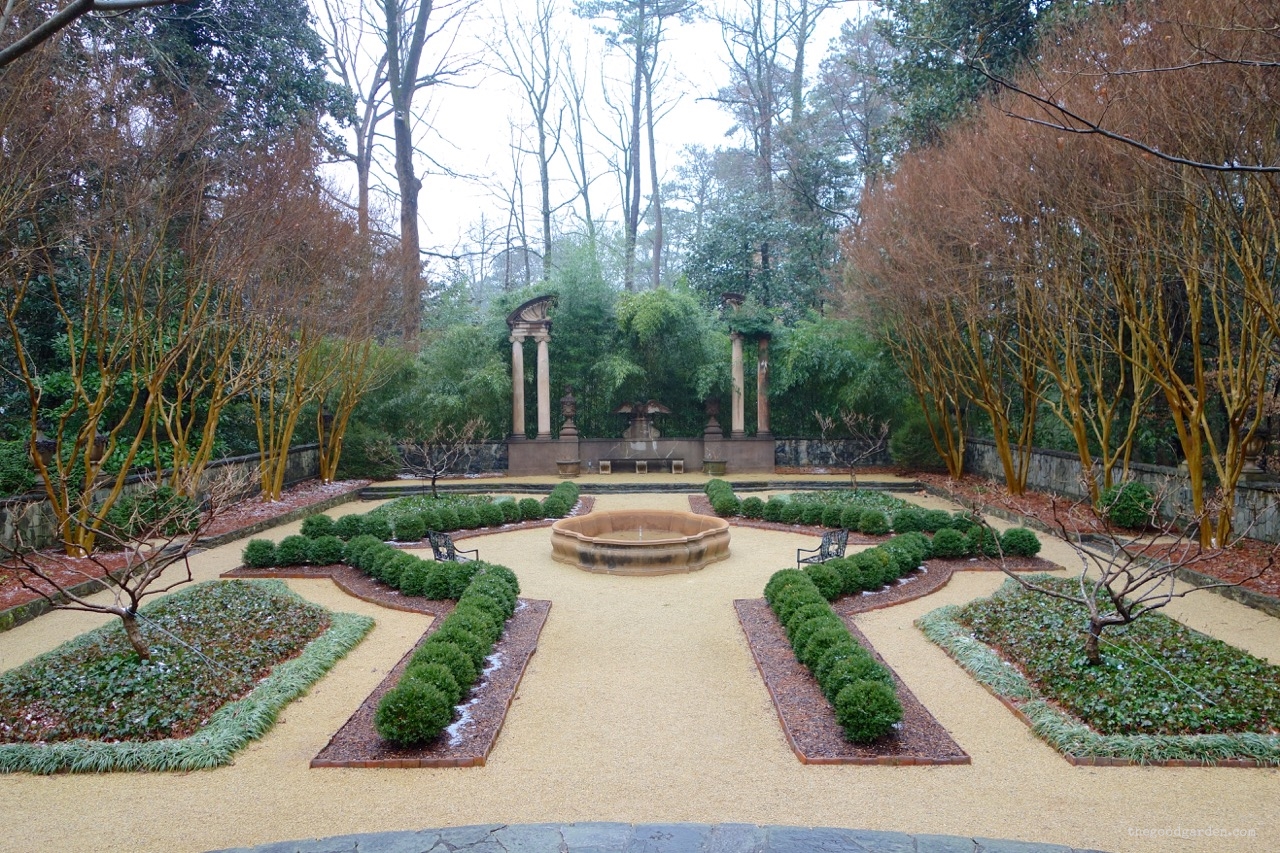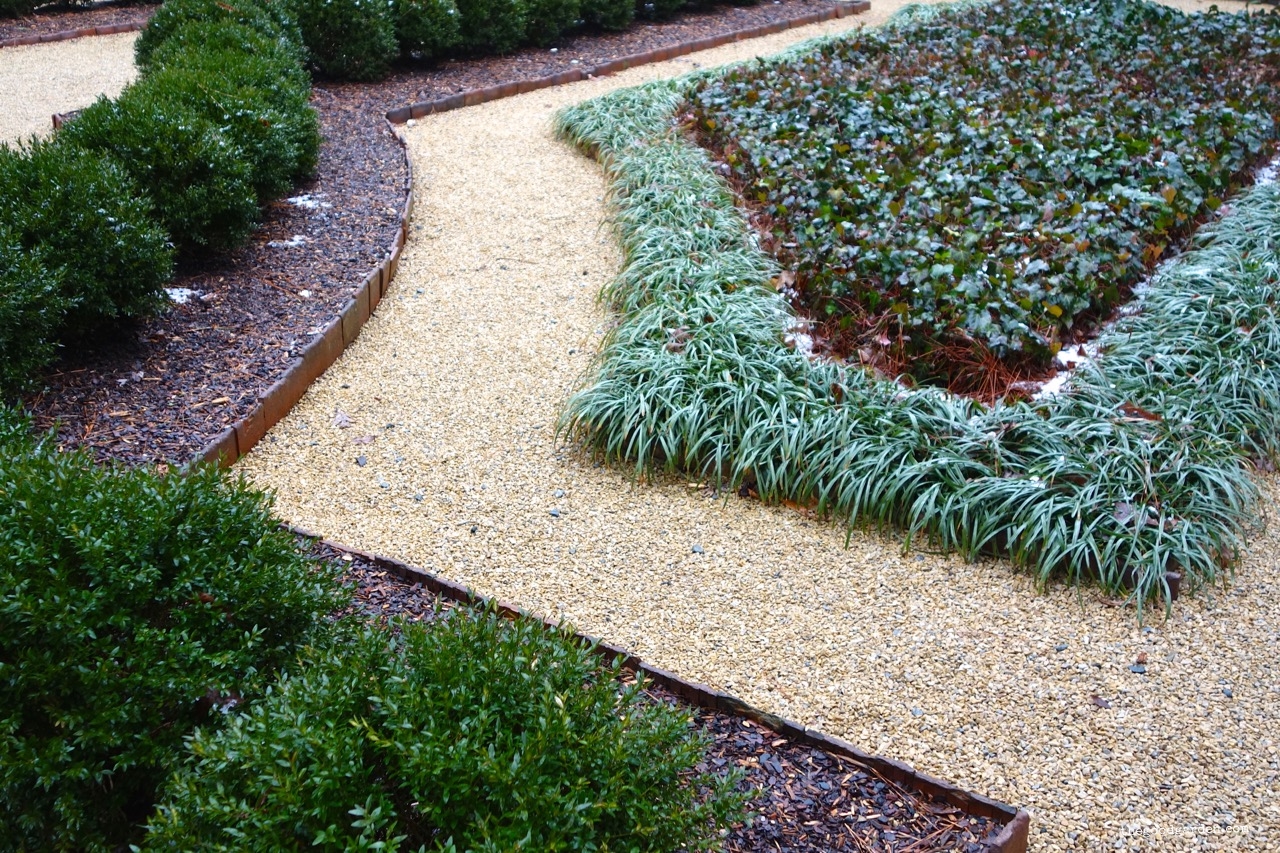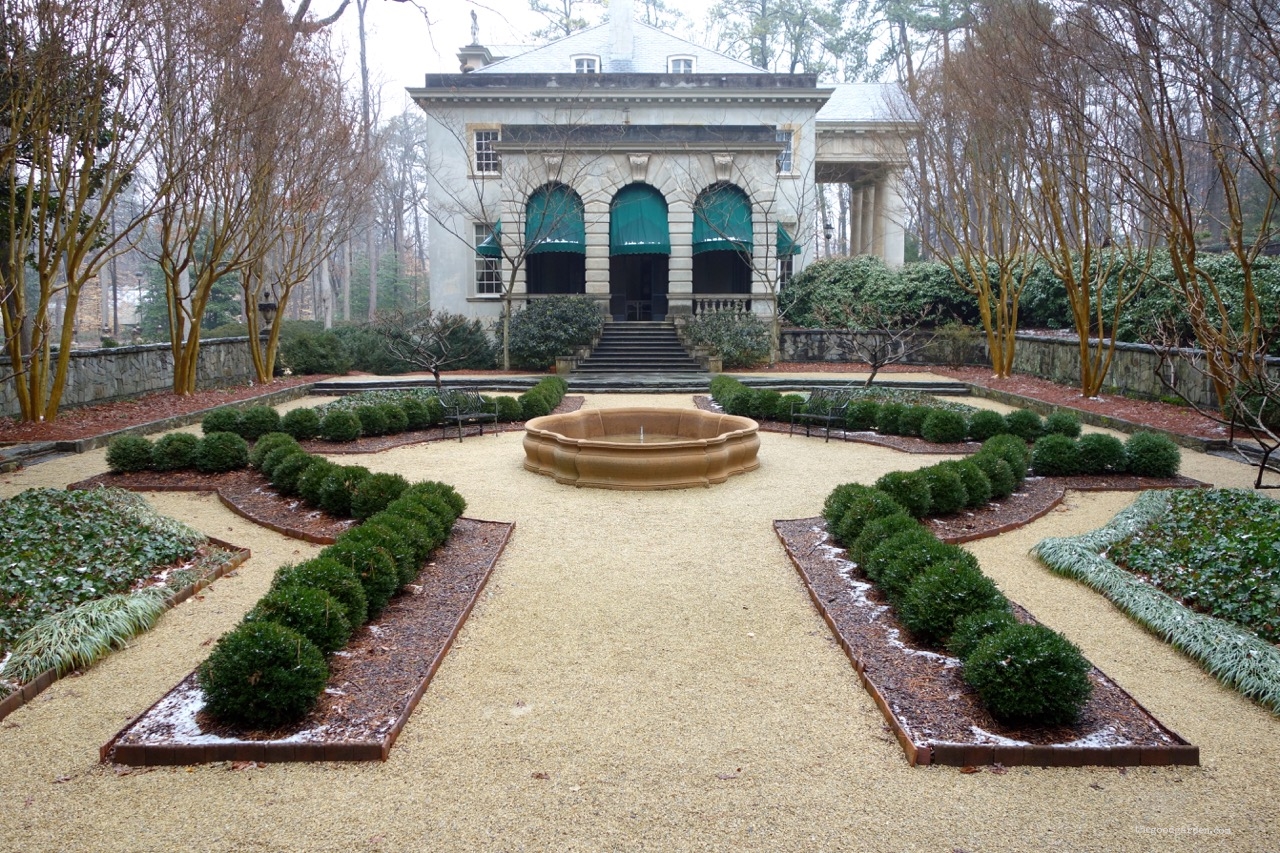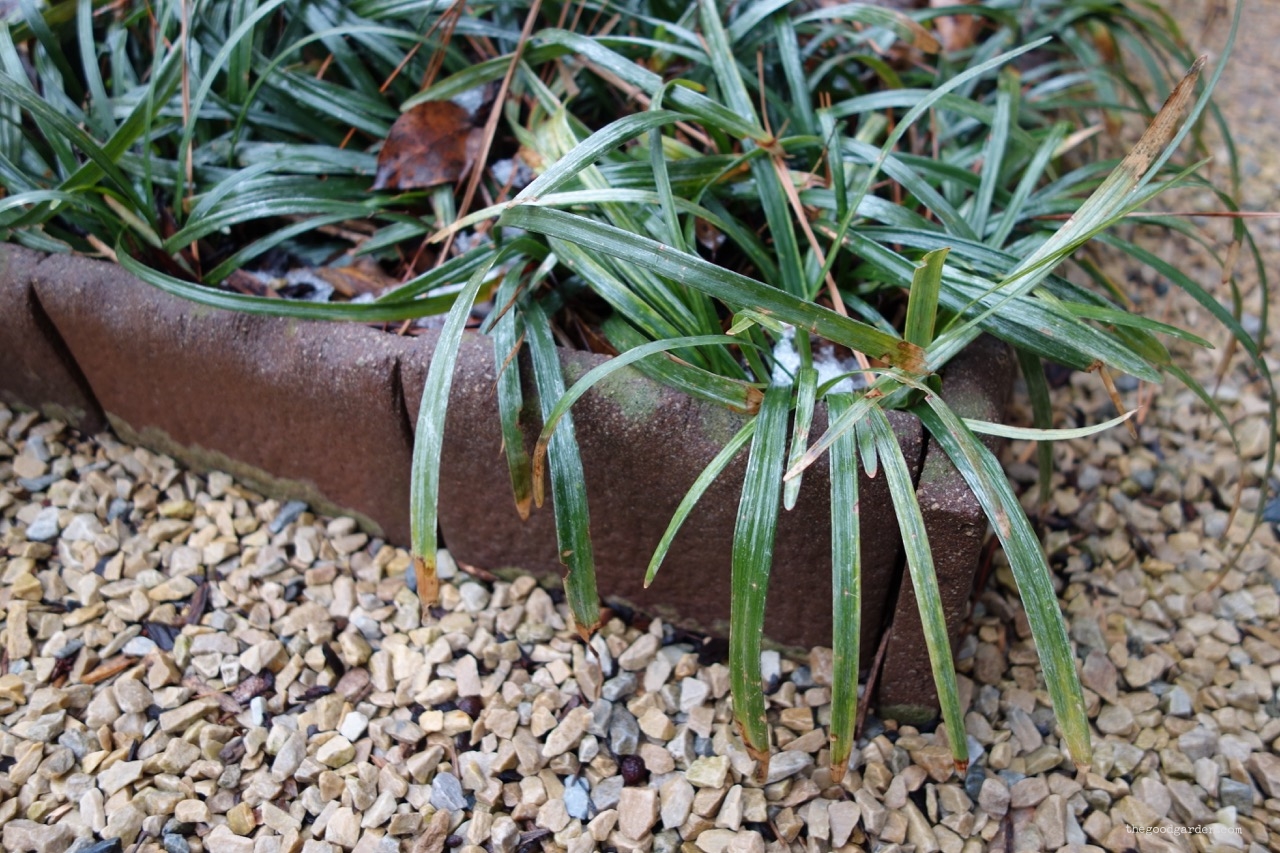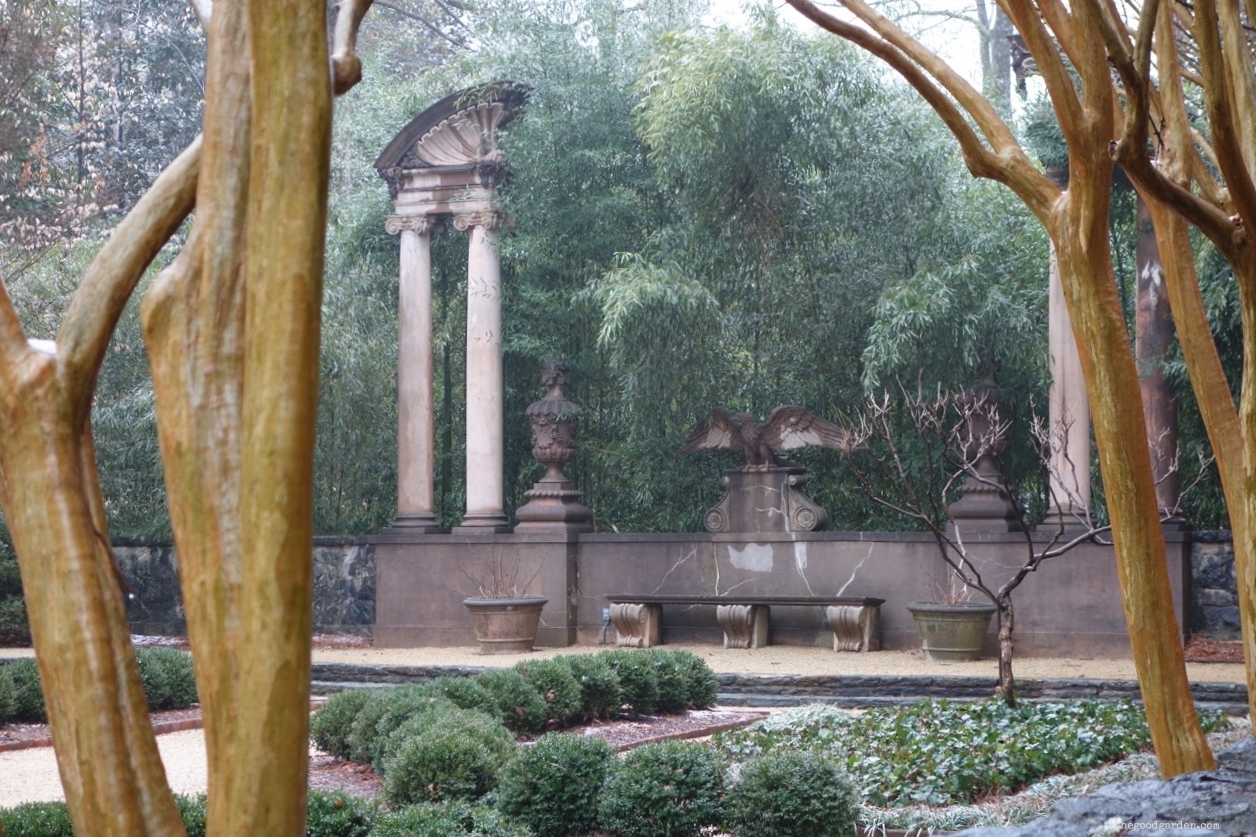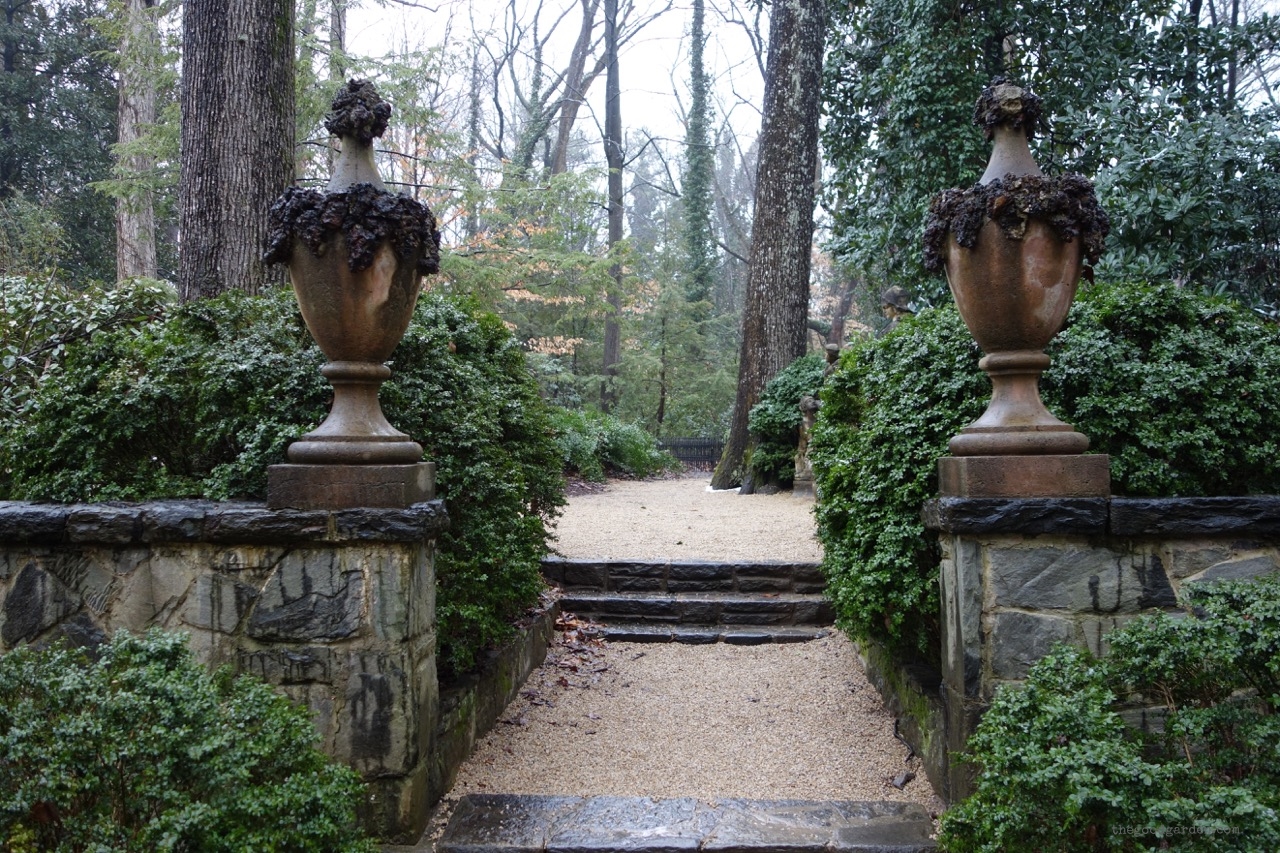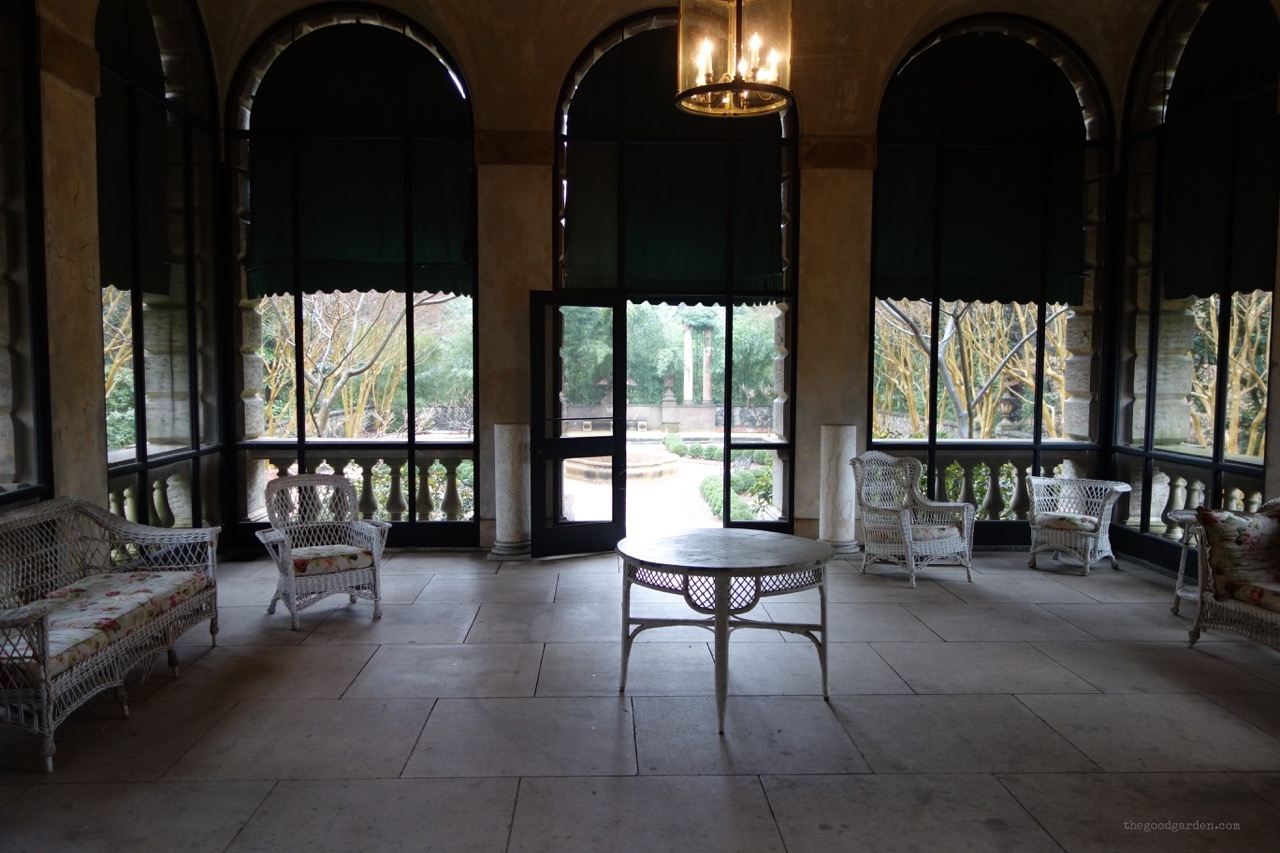This side garden in Atlanta, Georgia is a wonderful space where scale, geometry, symmetry, and simplicity work together.
A matching pair of brownstone urns and a few steps down mark the entrance to the garden. Set in a rectangle that lines up perfectly with a side porch, plantings and stone paths frame a central water feature. On both sides an allee of crape myrtles creates a sense of enclosure and shelter. Their colorful bark stands out on this rainy spring day. Tall columns and a grove of bamboo pull the eye to the back of the garden. The choice of plant material gives this garden a sense of place, but it’s the monumental stone eagle that says ‘we are in America.’
This is a large garden that could easily be scaled for a smaller space. And the simple plant palette - boxwood, bamboo, crape myrtle, ivy, and miscanthus – would work well in many situations.
Philip Trammell Shutze designed the Swan House and garden in 1928 for the Inman family, whose wealth came from their cotton brokerage business. Shutze was educated in the US and won the Rome Prize to attend the American Academy in Rome in the 1915. Georgia Tech School of Architecture professor Robert Craig describes Shutze as,“…an academic architect of the first order, known during his career as America's greatest living classical architect. The Columbus native was a designer of skill, with a masterly sense of proportion and scale, and a talent seldom rivaled by his contemporaries. For forty years he designed many of Atlanta's most elegant homes and buildings.” Source: Robert M. Craig, "Philip Trammell Shutze (1890-1982)." New Georgia Encyclopedia. 04 November 2013.
The Swan House gardens are done in the Italian renaissance style, which Shutze experienced during his time in Italy. For the well-to-do of the time, this approach was coming back into favor. For example, garden designer Diego Suarez started work on the Italian renaissance masterpiece at Vizcaya in 1914 and at Villa Acton in 1908, where he used columns similar to those at Swan House.
Sitting in Swan House’s side garden, I was struck that this is not just a calming rectangular space. Instead it represents 2,000 years of garden design, handed down, borrowed, and built upon over time. The core elements of this garden date back to some of the earliest civilizations: around 100 CE, the Romans borrowed similar ideas of axis, symmetry, and geometry from the Greeks, Persians, and Egyptians. In the 1500’s the Italians went back to the Romans for garden inspiration. And here we sit in 1920’s America, enjoying ideas borrowed from the Italian renaissance.
Good garden design never goes out of style.
American Classicist: The Architecture of Philip Trammell Shutze by Elizabeth Meredith Dowling is a wonderful book about Shutze's education, professional contribution, and life as an "old eccentric Southern bachelor." The photography of Timothy Hursley allows us to tour his many projects. The old photographs of Shutze in Italy, from his own collection and the Smithsonian, particularly captured my imagination and are worth a look. They provide insight into formative experiences that influenced his later work. Here is just a glimpse at a few examples.
Philip Trammell Shutze with sketchbook overlooking the Piazza Venezia in Rome around 1917. Source: E.M. Dowling, American Classicist. Shutze Collection.
Shutze and colleagues making a rubbing of inscriptions at the base of Trajan's Column, Rome. Source: E.M. Dowling, American Classicist. Smithsonian Institution.
A page from Shutze's sketchbook showing the technique used to record molding details. Source: E.M. Dowling, American Classicist. Shutze Collection.

